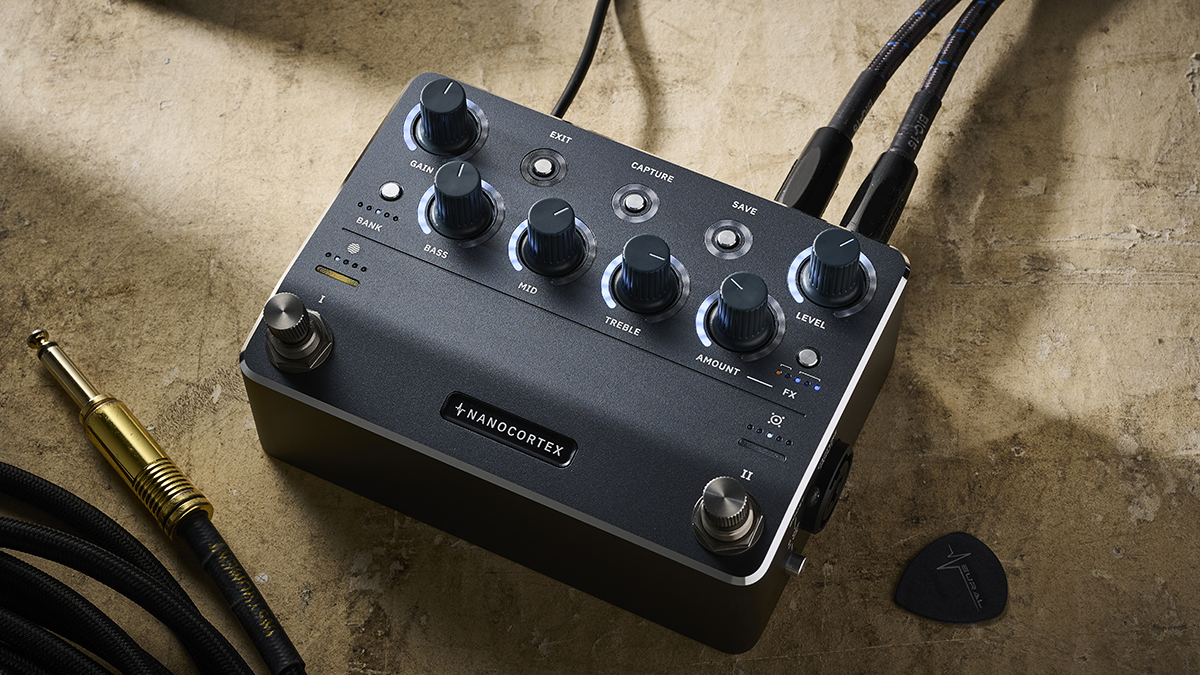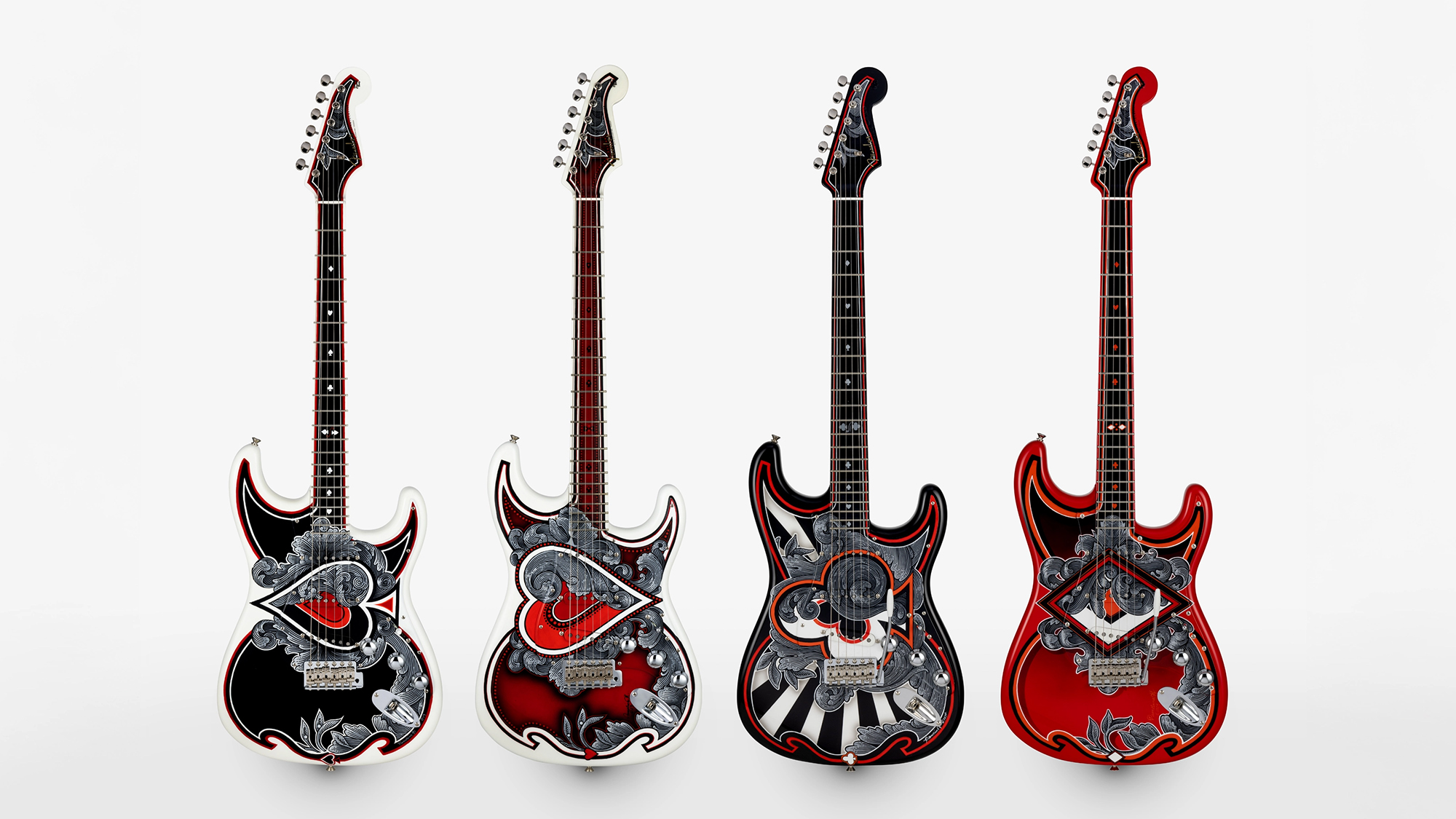“This has been part of the vision for a long time – pretty much when the Quad Cortex came out”: Neural DSP takes the fight to TONEX and Kemper by unveiling the Nano Cortex – its vision of the ultimate compact all-in-one rig solution
The Quad Cortex's first sibling works as an amp modeler, effects processor and IR loader – and lets players model any amp, cab or drive pedal using Neural DSP's celebrated Capture tech

Neural DSP has bolstered its pedal lineup by unveiling the Nano Cortex – a tiny-yet-powerful amp modeler, IR loader, effects processor and Capture device that ushers in a new era for the celebrated digital guitar gear company.
News of the Nano Cortex’s imminent arrival emerged earlier this week following some online leaks and a couple of, erm, interesting teaser videos, which hinted at the forthcoming unveiling of a new Neural DSP pedal.
This is a pretty big deal for the wider industry. After all, Neural DSP changed the amp modeler/multi-effects game back in 2020 when it first debuted the Quad Cortex.
One of the most powerful and easy-to-use amp modeler floorboards out there, the QC quickly became a staple of the digital gear scene, and regarded among the gold standard units of its kind.
However, since its arrival, Neural DSP’s competitors have been aggressively expanding their own lines. Line 6, for example, has issued the HX Stomp XL and HX One, while Fender has thrown its own hat into the ring with the Tone Master Pro.
As such, a new hardware product from Neural DSP seemed only a matter of time, especially since plugin/pedal compatibility is still a relatively new development.
To that end, Neural DSP has lifted the curtain on the Nano Cortex – a new amp modeler and effects processor that looks to be the firm’s answer to the IK Multimedia TONEX and Kemper Profiler Player, and (to a lesser extent) the Line 6 HX Stomp.
Get The Pick Newsletter
All the latest guitar news, interviews, lessons, reviews, deals and more, direct to your inbox!
In practice, the Nano Cortex is effectively an amp modeler and IR loader, which also offers a range of built-in effects (a Boss DC-2W-inspired chorus, BBD delay, Mind Hall reverb, noise gate and transposer) and Neural’s prized Capture ability – meaning players can capture (or ‘model’) their own amps, cabs and drive pedals directly from the pedal.
On the pedal itself, there are Bass, Mid and Treble parameters for tweaking the amp Captures, as well as Gain, Level and Amount knobs – the latter of which serves as a one-size-fits all parameter to control the onboard effects.
It also has Bank and FX buttons to cycle through both the Capture banks and effects options, as well as the trademark rotary footswitches, which are in charge of moving between the Captures and five IRs, and engaging the four recallable presets.
One thing the pedal doesn’t have, though, is a touchscreen – or a screen at all, for that matter. It’s an interesting design choice, especially from a firm that made its name with premium UI and intuitive usability.
But, as the Neural DSP team explained to Guitar World in a recent interview, the lack of screen was a deliberate decision.




“It's been part of the vision for a long time – pretty much when the Quad Cortex came out,” said CEO Doug Castro of the Nano Cortex. “For this we knew it'd be very, very small, and we actually wanted it to look like a pedal, so no screens.
“The idea was to make it very approachable for people that may never use something like a Quad Cortex, because they would rather use pedals, and not something that looks more like a tablet on their pedalboard.”
To get around that, Neural DSP has issued an updated Bluetooth Cortex Cloud app. Here, the Nano Cortex also has access to a near-endless library of public amp Captures – as well as IRs – that can be uploaded to the pedal.
The app offers in-depth parameter tweaking for the effects, which are fixed in place in a pre-set signal chain that can’t be expanded or changed.
Many assumed Neural would downsize for its sophomore stompbox, and that is exactly what’s happened. The Nano Cortex is really small, measuring in at just 5.6” x 4.0” x 2.4”, and weighing just 1.36lbs, making it perhaps the most powerful all-in-one rig solution for its size.
Other notable features include its USB-C jack, which can actually be used to power the Nano Cortex (thanks to the lack of a power-hungry screen) and turn it into an audio interface.



“Nano Cortex is the distillation of our ecosystem’s core features without any compromise in sound quality or ease of use,” says Neural DSP co-founder Francisco Cresp. “Neural Capture has never been so portable, so we encourage users to go and explore new sounds in the analogue world and carry them anywhere.”
As mentioned, the Nano Cortex seemingly looks to be Neural DSP’s answer to the TONEX and Kemper Profiler Player – two compact amp modelers that also offer some onboard effects and the ability to use an off-pedal platform to dial in tones and presets.
But here, you get the added benefit of Neural’s celebrated Capture function from the comfort of a minuscule stompbox, a slightly more generous array of effects, the Cortex Cloud phone app, and a portable pedal that's very easy to power.
And, at $549, it's competitively priced given the competition. It’s more expensive than the TONEX (which has a screen, and costs $399) but comfortably more affordable than the Kemper Profiler Player ($698).
In our Nano Cortex review, this writer praised the unit for its ability to cram world-class tones and Neural's Capture function into such a tiny, easy-to-power to package, and commended its intuitive app functionality.
“There’s a reason Neural DSP is held in such high regard, and that’s because the firm is at the cutting edge of amp modeling – and as a palm-sized amp modeler and cab simulator, this is perhaps the best option out there, screen or no screen.”
The Nano Cortex is available now for $549.
Head over to Neural DSP to find out more.

Matt is the GuitarWorld.com News Editor. He has a Masters in the guitar, a degree in history, and has spent the last 16 years playing everything from blues and jazz to indie and pop. When he’s not combining his passion for writing and music during his day job, Matt records for a number of UK-based bands and songwriters as a session musician.
“Our answer to everything players have asked for and more”: Neural DSP’s Nano Cortex had one major drawback – but now it’s been addressed with a huge free firmware update that takes on Kemper and TONEX
“If you’re a young guitar player, that’s money well spent”: John Mayer names the pedal he thinks every young guitar player should consider buying











